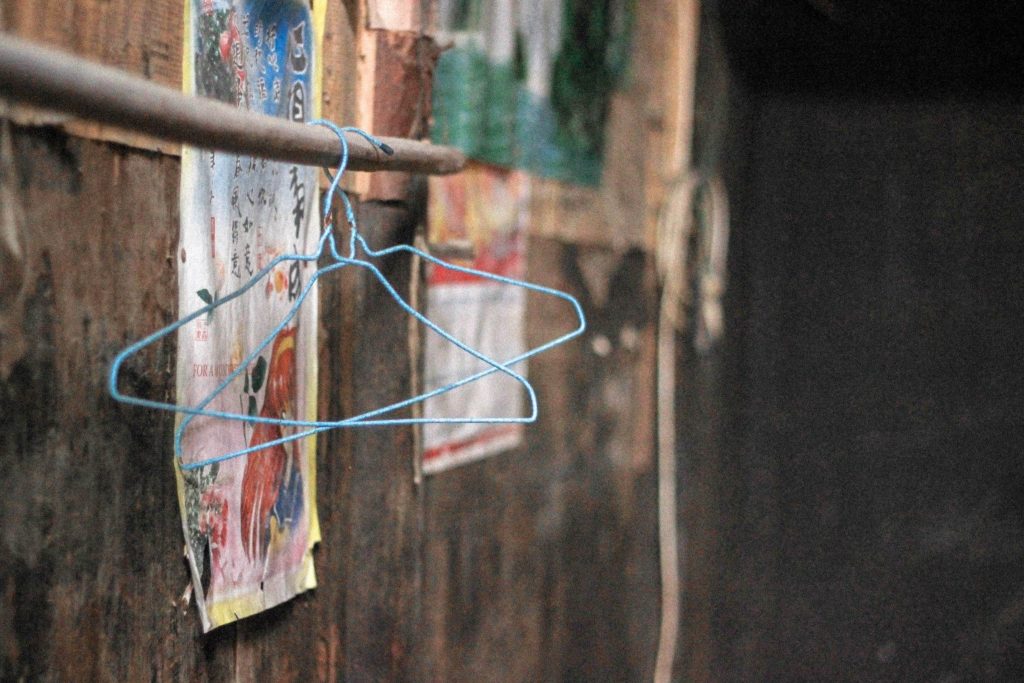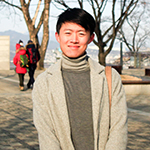Trickster Loses His Name
It’s strange, this unspoken agreement to never say their deeds aloud.
Maybe it’s that people don’t remember their names, but not many knew them to begin with. Perhaps no one wants to encourage this kind of behavior in others, and so hope, that by keeping silent, their actions too will be forgotten. Perhaps people are afraid that other young ones will follow in their footsteps to dangerous and unsung futures. But I think it is more insidious than that.
We used to celebrate the deeds of the warriors, decorated them with feathers and quills, honored them with feasts and songs. We told their stories, remembered their names.
But when the monsters came across the sea, we began to tell different stories, and it mattered whose war deeds we celebrated. We have different heroes after all, the blankets and the cut-hairs.
It may be ironic, but history books are filled with our heroes: Crazy Horse, Sitting Bull, Tecumseh, Geronimo. All loom larger than reality in the cloak of history: auspicious births, impeccable genealogy, perfectly oiled hair, masterful oration. And they share something else in common: defeat. Capture, surrender, imprisonment, assassination. They are remembered. Not for their names, but for their defeats.
There are other names. Names spoken only in whispers, if they are spoken at all.
An action, floating in a story, is incorporeal, equally capable of being true as untrue. Easily dismissed, and hard to exorcise.
When an action is tied to names, to dates, to places, it becomes history. History is easily dismissed by being confined to the undefinable and disconnected “past,” forever gone and incapable of happening again.
Maybe that is why our ancestors insisted on oral tradition. Maybe they understood how easily voice transformed words into actions, transformed histories into legends.
Legends show us what we are capable and to perform deeds greater than ourselves. If your heroes are capable of fighting back, so can you. If they can achieve a vision of that shining future free from the yoke of colonial rule, even if that vision is as fleeting as a cloud across the sun, it means that you can too. And if you know that victory is attainable and you aren’t fighting, you must come face-to-face with your own complacency. You must confront the secret that many of us carry and push down deep.
That you enjoy the spoils of your own conquest.
That you fear losing them.
That self-rule requires too much from us. Too much freedom. Too much responsibility.
History has made cut-hairs of us all.
There is always a fire first. We huddle shivering in the night, bare feet pressed against the earth made of ancestor flesh. Sweat dresses made under loving sewing machines and veined hands do little to keep out the chill of early spring. Snow hidden in patches under trees. Ceremonies are never kept secret, but only some people are ever told about them. The grandfathers are glowing red. Our misty breath carries songs to each other and to those watching from the woods. The wind lifting away words until only melody remains.
Tonight, we gather to remember the forgotten.
Their elder is dead now. They recall the storyteller, the feeling of being nestled between wrinkled feet and a woodstove, the way coarse laughter rejected the very title of “respected elder.” Maple sap and cherry pipe smoke weaving around Trickster defeating the Eater of All Things. The sparkling eyes when they spoke the names of Inkpaduta, Lozen and Galvarino. Imperfect and ferocious heroes were just as nourishing as the soup over the fire. Victory songs as fragrant as the medicines hanging from the ceiling.
The grandfathers have entered single file. One after the other, they warm the very earth. Breath billows in great clouds, carrying with it light that does not illuminate. Wakinyan tamni. Thunder’s water. Here, brother, share my towel. It’s one of the only reminders that our bodies still exist, that we are not simply voices in the black. Songs raising. Somehow, we become one prayer, the things that keep us fully human left behind. We remember what it feels like to be great.
When the Company began the necromantic project to transport the enslaved dead, the prayers of red nations surged skyward, and thousands gathered to answer the call. They came too. They stayed in the hail storms of rubber bullets and in the hurricanes of freezing water. They screamed their love at rows of armored men, bowed heads in silent rage at concrete barricades. Regardless, their poison flooded through pipelines, and the youngest of them wept.
“Do our prayers mean nothing?” she demanded of the arms of her brothers and sisters.
“Only when we cannot recognize how those prayers are answered,” said a brother.
The youngest slept in fits that night, but dreamed deep. No one knows about what, but they took her vision as an answer to a question that had burned through them in sweat and blood during their prayers, “When will we be free?” The answer was as chilling as it was simple.
When they no longer find it profitable for us to be enslaved.
The snow is leaving quickly. Soon, our sleeping relatives will wake, and we will put many of our stories away. Uncle is young, for a story keeper. How many people does it take for the Trickster to kill the Eater? Silence is strange thing here – even in the quiet. The grandfathers hum and crack, just low enough that they are only heard in the absence of songs. Even when Trickster is only accompanied by a lone warrior, an entire village stands behind the victory. Who made the bow? The rattles? Who prepared the meat, dried the berries, rendered the fat? Who taught the bird signals? Sang the dirges? Who quilled the moccasins, braided the hair, painted the faces? What makes such a dangerous undertaking necessary? Who birthed and safeguarded the children that made a future worth fighting for?
The strength of our warriors is in our nations. We provide the future that they fight to secure. The scent of cherry smoke drifts through the dark.
They thought it might be easy, making themselves into ghosts, but the world has a way of breaking the delusions of the young. So they embarked on their first works. The repetition of quiet conversations. The long hours of training. The dancing between protocol and urgency. The rote memorization of necessary supplies and equipment. The offerings of tobacco to both the living and the dead. The telling of stories to the young and old alike. The slow amassing of materials, resources, money. The mastery of silence.
To go alone is easy, to take others with is not, and victory depends on the strength of many. They knew that they could only rely on the dedication of others.
The old stories taught them well. The Trickster did not stumble on his victories alone. He is constantly spinning a tangle of relations. Even spirits require tobacco. Even ghosts need a feast.
The door is open. Bring in that grandfather—he has been waiting.
We don’t know what happened to them for several years after that. Some saw them in southern jungles, warring in the mountains. Rumors came that they were fighting in the sunset lands beside the braided golden eagles. Whispers came from the pines that they fought with the warriors of the yellow sun. But when a new black snake began to emerge from the great mountains of the west, the prayers of thousands begged for warriors. Over the earth they came.
The ladle is coming around. It is a good practice to go without, even when the thirst cuts deep. Be aware of the needs of the people around you. Having compassion for their struggle because you struggle too. Take small sips because their battle is your own. Drink deep, young one. Your strength is needed, and there are more doors to go. Take refuge in darkness.
Remember, there are show horses, and there are war ponies. We laugh and she does too. Long ago, we had no use for show horses. Well, maybe if you were chasing a wife! Pony and rider alike were decorated with only the honors earned. Now, people care more for the shine of regalia than the flash of battle! We laugh again. What good is a show horse who fears the taste of iron? What good is a warrior if he cannot whet a knife?
At first, no one could identify their actions; it is always hard to know who to blame when a pressure station glitch causes an underground explosion. Over $3 million in clean-up and two weeks of delays. The old ones wept at the answer to their prayers. Here, they said, was proof of the Company’s carelessness.
Imagine the shock when the ecological devastation did nothing to stop approval for the new line. Even the carefully crafted environmental impact statement filed with all the appropriate bureaucratic accoutrements was dismissed within weeks. Words and speeches did nothing to stop the sudden import of construction equipment.
But human hands might have had a role when 37 valve stations on four different lines all went through emergency shut down, concrete poured over their manual controls.
In what was the typical fashion, another protest camp sprang up overnight, complete with the old, the very young, and the infirm. Rumors of forthcoming raids occurred with such frequency as to be an on-running camp joke. Then came the actual raid on camp. Caltrops found on an access road was the excuse given to the press.
Camp leaders promptly decried and forbade the use of such “weapons.” Factions of the camp emerged, some furious at the decision: “That is non-violent direct action!” they protested. “Destroying property is not non-violent!” came the retort. “We cannot resort to violence – this camp is a site of prayer, not war! We fought our wars long ago, and it led to nothing but death!” So the chastised “youth” were left holding their tongues rather than cutting their teeth. They were left with nothing more than the usual, the safely predictable: prayerful marches; parades of painted horses; meticulously choreographed machine lock-downs; selfie-saviors and lecturing leaders. The old, the elected, and the self-appointed were able to curb the actions of their own at camp, but the violence of their opponents continued against the red people they claimed to protect.
There are too few of us, says the brother by the eastern door. How many fingers makes a fist? asks the western sister. Pass the antler. More will come, says the elder in the south. We are already here, says the northern child.
There was an illusion that security would be like Kevlar, tightly-woven and impenetrable. But it was thread-bare, and they cut through like the prayer cloth they tore in preparation. There were over 600 miles of the line. The camp only touched two. And the Company only could only guarded five.
WATATOAP was found spray-painted everywhere by no one. When federal eyes demanded an explanation, camp leaders bristled. Some joked that it sounded like Tonto’s long lost brother from a John Wayne flick. Others claimed it was the name of a ghost.
Raids into camp yielded nothing but the normal nefarious assortment of acrylic paints, household cleaners, and canning supplies. Conspiracy charges became known as one-liners, as much for their length as for their hilarity. Cases piled up, were shuffled around, and then dropped. Field agents hounded their informants. Songbirds and snitches railed at their handlers. Ultimately, a handful of people were charged with trespassing and disorderly conduct.
Attacks into pressure stations became an almost weekly occurrence along smaller lines. At first, concrete was used to cement closed emergency valves, but soon oxygen and acetylene torches were used to weld them shut. Baseball bats were taken to the digital meters. Blowtorches cut the seams out from valves on the new line. Pulleys were melted into immobility on cranes with 40-foot pieces of pipe suspended high above the ground.
But nothing could beat thermite placed in the slow release mechanism of a flower pot at 126 (reported) sites along the pipeline route, the night before the hydrostatic testing.
War ponies are work horses. They need supplies, time, preparation and support. Our communities need to be resilient, our alliances strong! That reminds me, Auntie Lisa’s friend near Laguna sent fifty pounds of blue corn. We will distribute that to the houses. But that will have to wait. It is time for songs now. Dinner is the time for logistics. Little Brother is forever reminding us of our practicals, and Grandmother is forever reminding us to be mindful of where we are. We have such a long way to go, and now is the time to give thanks for where we have been.
The project ground to a slow halt, with almost $4 billion dollars in damages. A federal judge denied the permit through disputed lands. A Company spokesman stated that, while appealing the court’s decision, they would comply with the court-ordered suspension of construction until such time as they won on appeal and these terrorists could be brought to justice. They said nothing about completing the repairs on existing lines.
Spring ice still froze tents to the ground, but the protest camp filled with dance and jubilation. They had succeeded! Prayers and legal action had brought this monster to its knees!
Camp leaders made appearances on televisions more foreign than domestic. Legal teams were praised, staff honored their donors, and the media was thanked for their tireless work of featuring their voices on the 9th page of the paper. Weekend warriors conferred with reporters. Elderly councils bickered about the power of prayer and unification. Celebratory cigarette butts were piled alongside the ceremonial fires lit for feasts.
But few discussed what happened outside of camp. Even fewer prayed for them.
A statement was delivered to media outlets from an anonymous server. Only a few reported on it, at least at first. But it spread like fire on the Network:
The children of this land will no longer tolerate violations of our ancestral territories.
We have declared war upon you. We have won the first battle.
Now that we have stopped this threat, we turn our attention to the lines of exploitation that have been plaguing the health and safety of our lands and peoples. No more shall we suffer the assaults on our women. No more shall we suffer the theft of our children. No more shall we suffer the perversion of our warrior traditions to serve you. No more shall we tolerate the rape of our Mother.
When prayers mobilize into actions, we become unstoppable.
WATATOAP
The assaults on our people have been many and varied. Any one attack could have been withstood, but not so many, from so many different places. Now, we must do as they did. Quietly, without warning, so that our arrival is unknown. A fight is over when the first fight-stopping wound is landed. We cannot know what will be the wound that kills the Eater, so we must inflict as many as we can. Death by a thousand cuts is death nonetheless.
Eight months after the statement release, an infamously haunted cargo ship in a harbor on the northern lakes slipped slowly beneath the water. Thirteen Indian women showed up at a shelter in one of the northern towns the next morning. Rape kits conducted showed evidence of years of abuse, and their identities were quickly found on missing persons reports that were never followed up on by law enforcement. All women could talk about were the names of their captors, and the painted faces that came for them that night.
One arrest was made. A young man had been spotted wandering the shipyards in the hours before the sinking, He was identified by a raven’s flat cap and pop-hero spider shirt. He only spoke in a strange language during questioning, and he ended up in confinement with conspiracy charges and the threat of 25 years in prison. That night, two more ships made their way to the bottom of the harbor, and in the morning, 32 more missing women surfaced at the station.
Spidey must have learned English during his time in confinement: “I guess those ships were haunted too.”
A year and a half later, a Mine, sister to the poison snake of the dark mountains, found itself haunted as well. Weeks after workers were laid off with in favor of automation, Mine representatives were covering up a break-in at their headquarters. Nothing seemed to have been taken, but the haunts began to appear. Damaged aquafer-tapping pumps. Copper wiring bound to train tracks, slowing down shipments for weeks as workers walked lengths of track trying to find the blockage, only for another to pop up. Shoot mechanisms malfunctioning. Damp coal spilled onto the tracks. While the press finally began covering the poltergeist at the mine, a reporter accidentally discovered a report confirming what locals had known for years: acid drainage from the mine had been contaminating local water sources.
Lights swirl but somehow we still cannot see. Sadly, we must learn from the mistakes of our ancestors, and realize that sometimes our most ferocious enemies will be among our own people. The silence we keep is protection as much from our own as our conquerors. How then will we grow? Carefully, sister. Until we are too great to be stopped.
Powwows are plagued by undercover agents, trying desperately to entrap the young and the excited. Archaic laws limiting gatherings of red peoples are increasingly enforced. Urban street dwellers are facing greater and greater violence at the hands of blue coats. There have already been casualties, prompting the revival of local patrols. Elders seem to be dying more and more frequently from neglect in federally-run facilities. Black suits have appeared at more than one doorstep, just to ask questions. Last week, two boys barely made it out of a rural mob alive. Ideas to privatize tribal trust lands are gaining traction by public officials as a solution to this new “Indian problem.”
Meanwhile, the people prepare. The ghosts are being fed.
Rage and fear can be hard to leave behind. Heat turns tears to salt, and smoke lovingly wraps around weeping hearts. Minds cannot be clouded – the stakes are too high. So often, comfort can only be found here, in song, in story. They have made the world a weapon and sent it out to break us. Remember, grandfather whispers, we were here to witness the making of rivers. They are no match for our memories, let alone our dreams. Our fires are reflections of starlight.
At a hand drum contest, one boy sang a 49er about ghosts. Another was so bold as to sing the word WATATOAP. Stern words from the emcee and a few smiles from the crowd. A powwow stand was driven out for selling WATATOAP shirts. A few of the tribal news outlets left to continue to report on actions, but their barely read words are sharp with condemnation. Grandfathers and aunties growl about the violence. It’s giving Indians a bad name, tarnishing the reputation they apparently worked so hard to keep pristine in their younger years. Crazy Horse never hid behind a mask.
No one suspects old Indian tales to mean anything real. Not even Indians. Laughter again. They are memory embodied. Old battles fought at the making of the world teach us our strategies at the time of its remaking. And when the world is remade again, they will not remember our names. They will remember Spider and his defeat of the Black Snake. Coyote and the Captured Mothers. Raccoon tricked the Earth Carvers. Even how Raven stole the Spring. They will remember the stories of the future we birthed.
Trickster struggles to spin his tangled web when his eight hands are making mischief. With so many ancestors awoken, there are more ghosts than hauntings, and still not enough feasts to feed them. But old languages, words, and songs emerge finding new purpose.
The storytellers, leaving behind inert episodes in the secrecy of winter, are breathing new life into old stories. Conflicts are brought up to date, familiar characters intertwined with the names of martyrs and heroes. The Eater now fears the racking of rifles alongside the rattle and the drum. Stories happened less and less “long ago,” and more “somewhere else, but maybe yesterday, and maybe again tomorrow.”
The artists again participate in the cycles of the community’s movements. Beadwork featuring endlessly replicated designs of other places manufactured into hollow symbols is discarded and replaced with simple patterns resonant with understanding. Symbols of 26,000 year cycles are quillworked into only a handful of lines. The inexpressive and overwrought masks come back to life, faces rising from the wood and cedar smoke. The earth and clay is shaped into new forms. Traditional rules of color and composition are abandoned to make way for ones more ancient.
More mothers choose for their children the original teachers of buffalo and salmon, meadowlark and dragonfly. Medicine men who fear the rising menstrual rites find themselves increasingly abandoned. Seeds planted generations ago begin to emerge. The people gather to hear the dreams of new and ancient ceremonies gifted to the young.
Last door. The last grandfather is the only one still glowing red and its heat is different, not so much warming as fortifying. Like all our traditions, our last song is old but remade. Iron Snakes and Eaters have reshaped the lands and waters and our villages, and we have had to reshape accordingly. Warriors are named, rise up, and are forgotten. New rivers are forming, and burial mounds build new mountains. The trickster will name them as we stake camp.
Sunkwaste kin tokamun he
Sunkwaste kin tokamun he
Sunkikicize wacin yedo
Niwiyeyab he? Iho. Tiyopa yugan wo.
We gather supplies, seeds, bows, and rattles. We house them. We tell them stories. We pray, and we fast. We keep our silence. We tell their stories. We honor them, and we name their deeds.
We whisper names set aside. We pray for those we buried. We braid the hair of war ponies. We feast and breathe life into ghosts.
We remember again.
We are the answer to our ancestors’ prayers.

Oweota Win Serenity Roberts is a Wahpetunwan Dakota mother, wife and midwife. Living and working on her occupied territories, she is a frequent witness to the exploitation and destruction of her ancestral lands and holy sites, as well as her language and traditional lifeways. She regularly collaborates on Fanonian artistic works with her husband and son to cultivate a new mythology surrounding resistance to the colonial state.

 BACK TO ISSUE
BACK TO ISSUE























